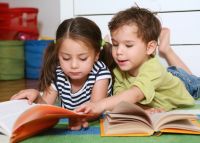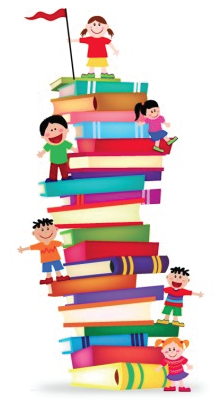literacy
Learning to Read – Is Your Child at Risk?
Identifying risk factors in your child that could impair literacy skills.

Children with language impairments often experience great difficulty learning to read and write. Other risk factors include: having a developmental disability, having a parent with a history of a reading disability, speaking a language that is different from the local academic curriculum, and/or living in a household where experiences with oral and written language are infrequent. Signs that your toddler may struggle with reading in the future include lack of interest in nursery rhymes or shared book reading, difficulty following simple directions, difficulty learning the names of letters, and failure to recognize or identify letters in the child’s own name (ASHA, 2008,www.asha.org).
- Nearly 50% of children enter kindergarten with at least one serious risk factor that may negatively affect academics (Rimm-Kaufman, Pianta, & Cox, 2000)
- The best predictor of end-of-kindergarten literacy skill is beginning-of-kindergarten literacy skill (Walpole, Chow, & Justice, 2004)
- The likelihood that a poor reader in first grade will stay a poor reader through fourth grade corresponds to a probability of .88 (Juel, 1988)
Speech-Language Pathologists Can Help
Research emphasizes the need to prevent reading problems through emergent literacy intervention. Speech-language pathologists (SLPs) can identify children at risk for reading and writing difficulties and provide intervention to remediate literacy-related difficulties. The intervention will be a collaboration between the parents, teachers, caregivers, and the SLP.
Learning to Read – What Can Parents Do to Help Their Child?
You can help your child develop literacy skills during regular activities without adding extra time to your day. There are also things you can do during planned play and reading times. Show your children that reading and writing are a part of everyday life and can be fun and enjoyable. Activities for preschool children include the following*:
- Talk to your child and name objects, people, and events in the everyday environment.
- Repeat your child’s strings of sounds (e.g., “dadadada, bababa”) and add to them.
- Talk to your child during daily routine activities such as bath or mealtime and respond to his or her questions.
- Draw your child’s attention to print in everyday settings such as traffic signs, store logos, and food containers.
- Introduce new vocabulary words during holidays and special activities such as outings to the zoo or the park.
- Engage your child in singing, rhyming games, and nursery rhymes.
- Read picture and story books that focus on sounds, rhymes, and alliteration (words that start with the same sound, as found in Dr. Seuss books).
- Reread your child’s favorite book(s).
- Focus your child’s attention on books by pointing to words and pictures as you read.
- Provide a variety of materials to encourage drawing and scribbling (e.g., crayons, paper, markers, finger paints).
- Encourage your child to describe or tell a story about his/her drawing and write down the words (ASHA, 2006, www.asha.org)
Early Childhood Literacy Development and Getting Ready to Read.
 When should I begin preparing my child to learn to read?
When should I begin preparing my child to learn to read?
Early childhood literacy development occurs from the time a child is born until they are four or five years old. During this period of emergent literacy , children become aware of the world of print and sound. You are probably already teaching your child basic reading skills, even if you are unaware.The importance of written language is demonstrated through naturally occurring experiences in the home and preschool or daycare environments, such as watching mom make a grocery list, and learning to recognize the letters and colors of a stop sign (Roth, Worthington, 2005).
What are some signs that my child is developing emergent literacy skills?
Activities such as pretending to read and write from books show that children understand messages that are conveyed through print. After listening to stories from their parents and teachers, they may begin to produce their own narratives and act them out. Some children may point out familiar logos and words in their surrounding environment.
Parents should continue to read aloud to their children and encourage symbol and color recognition during daily activities. Our next post will discuss risk factors that can lead to impaired reading skills including language impairments.
Additional reading: Are Spoken Language and Literacy Connected?
Are Spoken Language and Literacy Connected?
YES! Spoken language is the foundation for the development of literacy skills. The experiences with talking and listening gained during the toddler and preschool years prepare children to learn to read and write. This means that children who enter school with weaker verbal abilities are much more likely to have trouble learning to read and write. Phonological awareness, the recognition that words are made up of separate speech sounds, is one skill that is very strongly connected to reading and writing. Phonological awareness skills include, but are not limited to, rhyming, blending sounds (e.g., combining the separate sounds b, a, and t into bat), alliteration (e.g., big bouncy bubbles), and isolating sounds (e.g., c is the first sound in cat). Children who perform well on these tasks are less likely to have difficulty learning to read.


